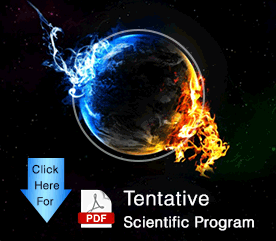
Eckhardt Alexander
Federal Environment Agency (UBA), Germany
Title: ToxBox – A tool for evaluating anthropogenic micropollutants in drinking-water
Biography
Biography: Eckhardt Alexander
Abstract
Introduction: Back in 2003, a theoretical concept for assessing micropollutants in drinking-water, called Health-related indicator value (HRIV), was developed by the German Environment Agency (UBA). This concept helped to derive a HRIV for substances, for which limited amounts of toxicological data are available. Depending on the effect induced a HRIV between 0.1 to 3.0 μg/l is assigned. Since then an increasing number of trace substances was found in drinking-water. These chemicals had to be evaluated, because they were found in drinking-water. Genotoxicity, neurotoxicity and endocrine effects were considered to be the most important effects. Using neurotoxicity as a pars pro toto we herein describe the in vitro methods applied for assessing possible neurotoxicity. Materials & Methods: 20 substances were tested for possible effects on necrosis and cell morphology, induction of ROS and apoptosis (Figure1). This was tested in SH-SY5Y neuroblastoma cells and in HepG2 cells as a reference. Seven substances that had stronger effects on SH-SY5Y cells were considered to be potentially neurotoxic and thus additional tests specific for neural cells were performed in a second tier. These tests are: content of neuron specific enolase (NSE), neurite outgrowth assay and assessment of morphology of primary human astrocytes. Results and Conclusions: For five out of seven substances showing potentially neurotoxic effects in the first tier, these effects could be proven by applying the second tier of tests. Dichlorvos was most effective in neuroblastoma cells whereas very low concentrations of atrazine and nonylphenol resulted in morphological changes in primary human astrocytes. Our tests indicate that the neurotoxic potential of chemicals can have different effects in different neural cells. It is therefore necessary to perform several tests for obtaining reliable results. After testing 20 substances, seven were considered potentially neurotoxic. The assumption was supported in five substances by the specific set of tests. We therefore conclude, that our tiered approach introduced here, provides us with reliable results. Nevertheless, a follow-up project was initiated for further improvements.

